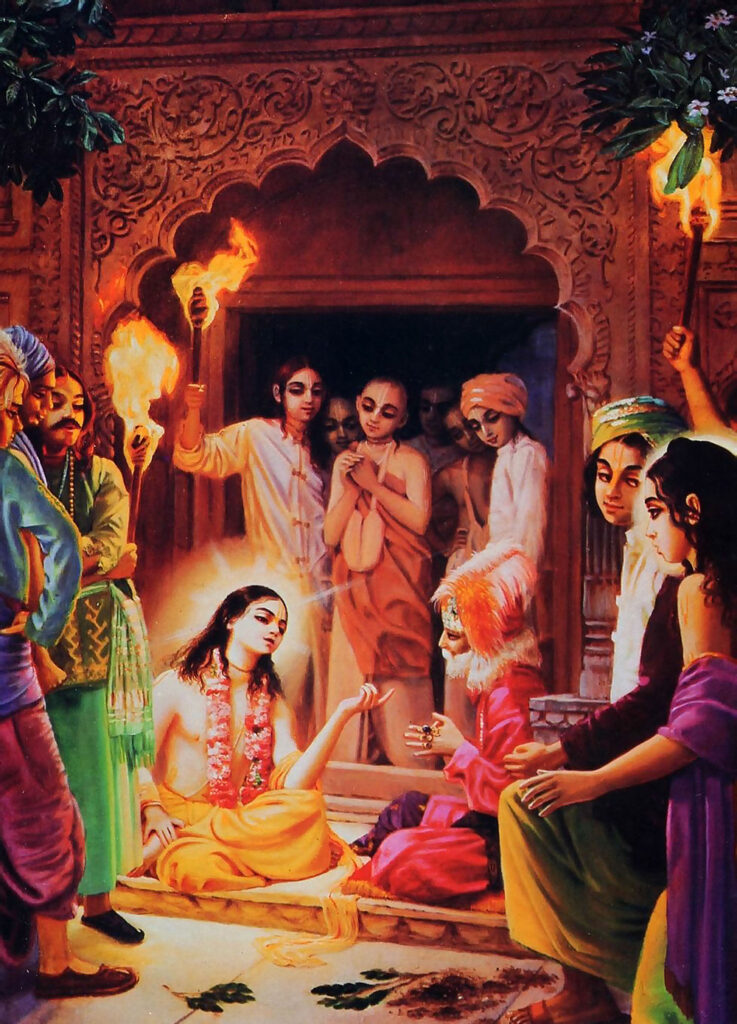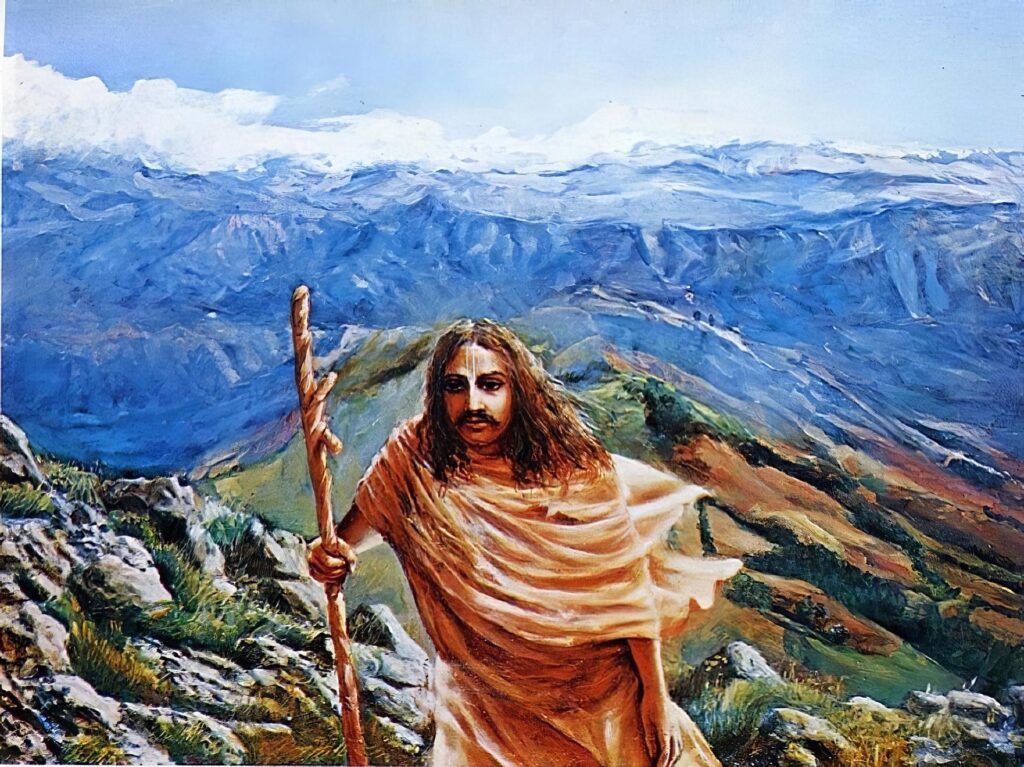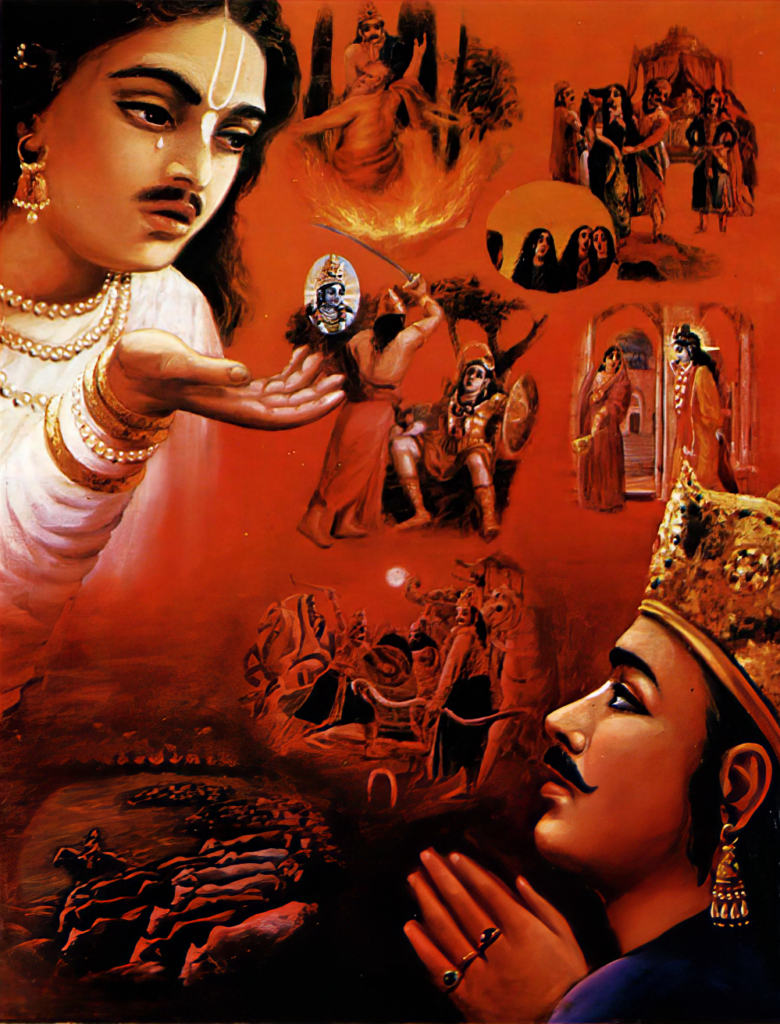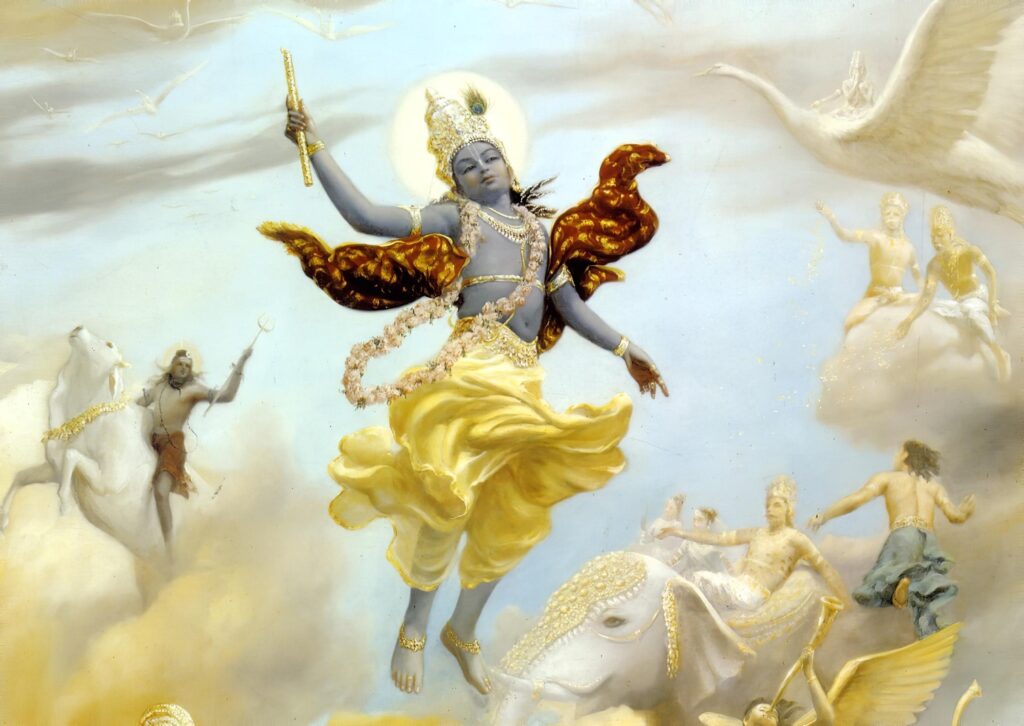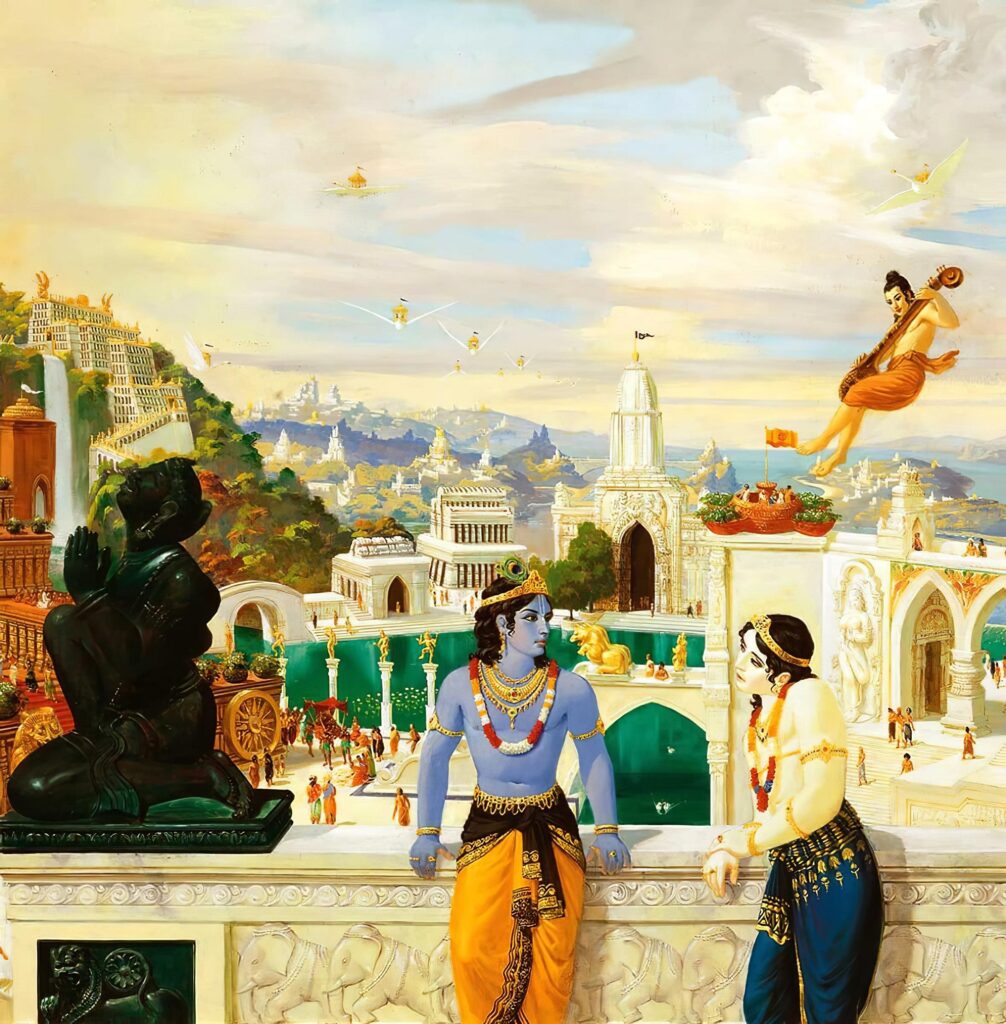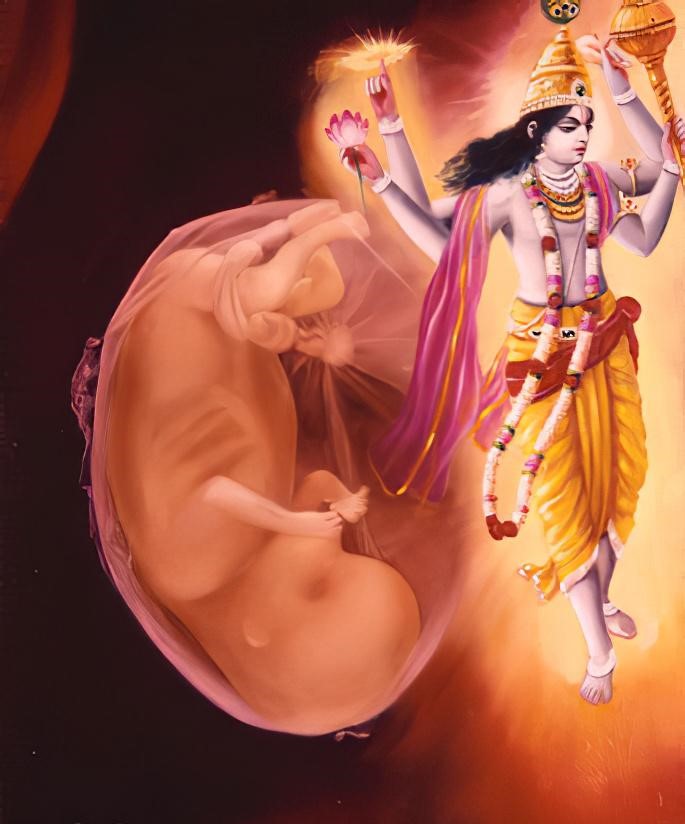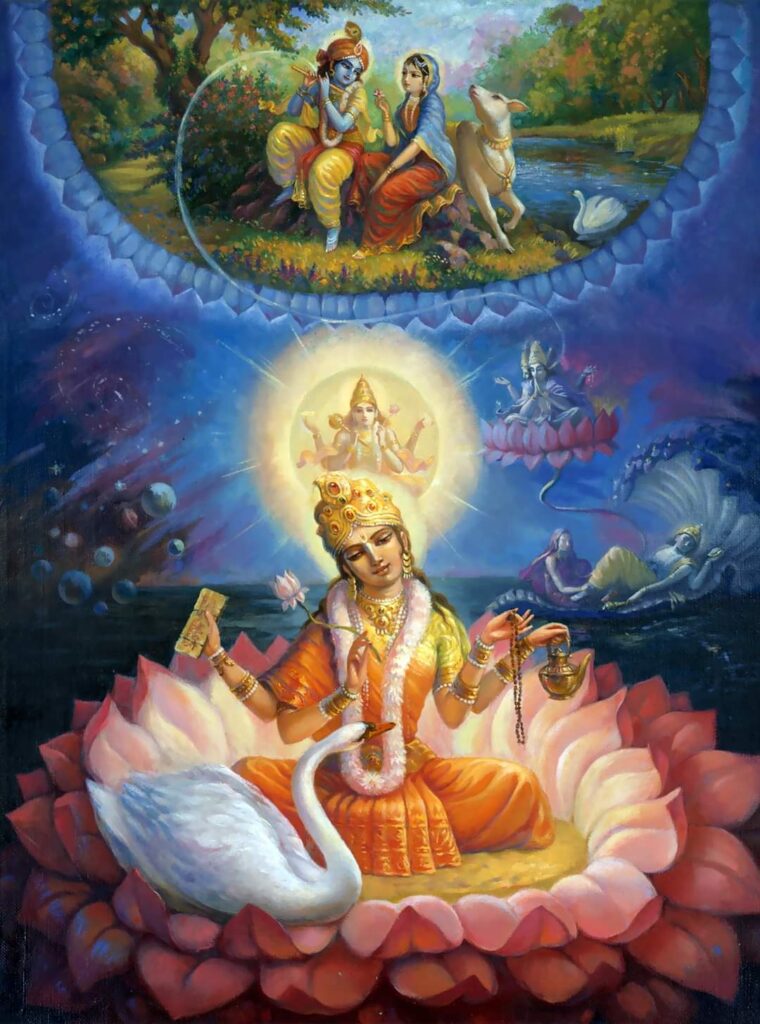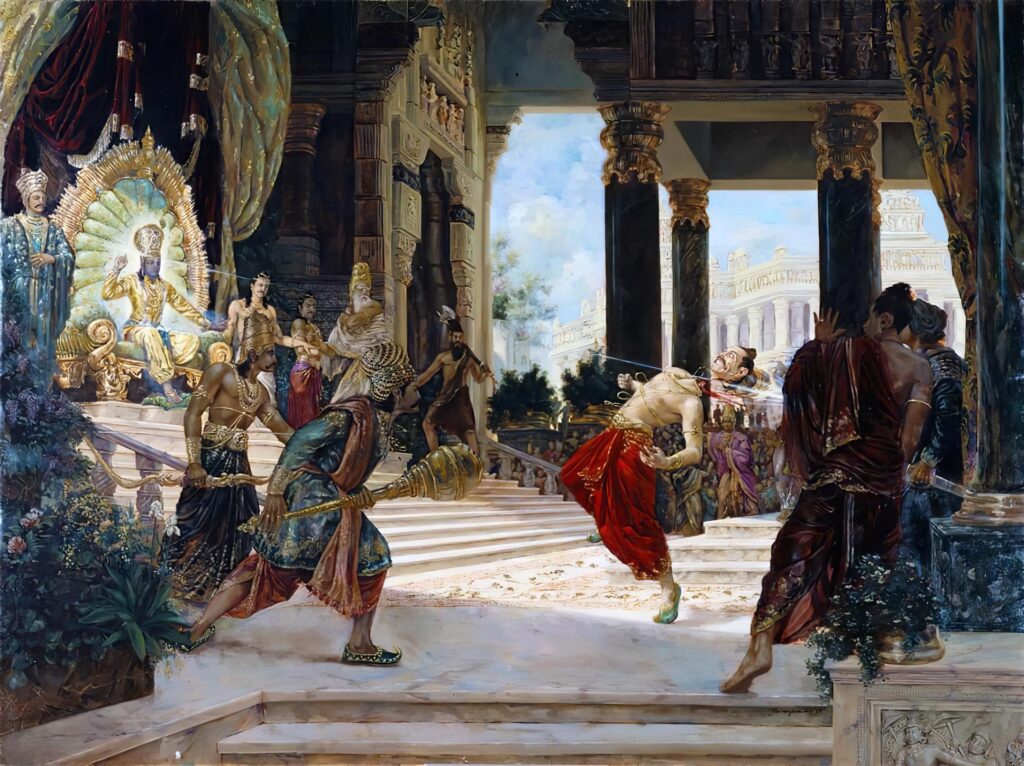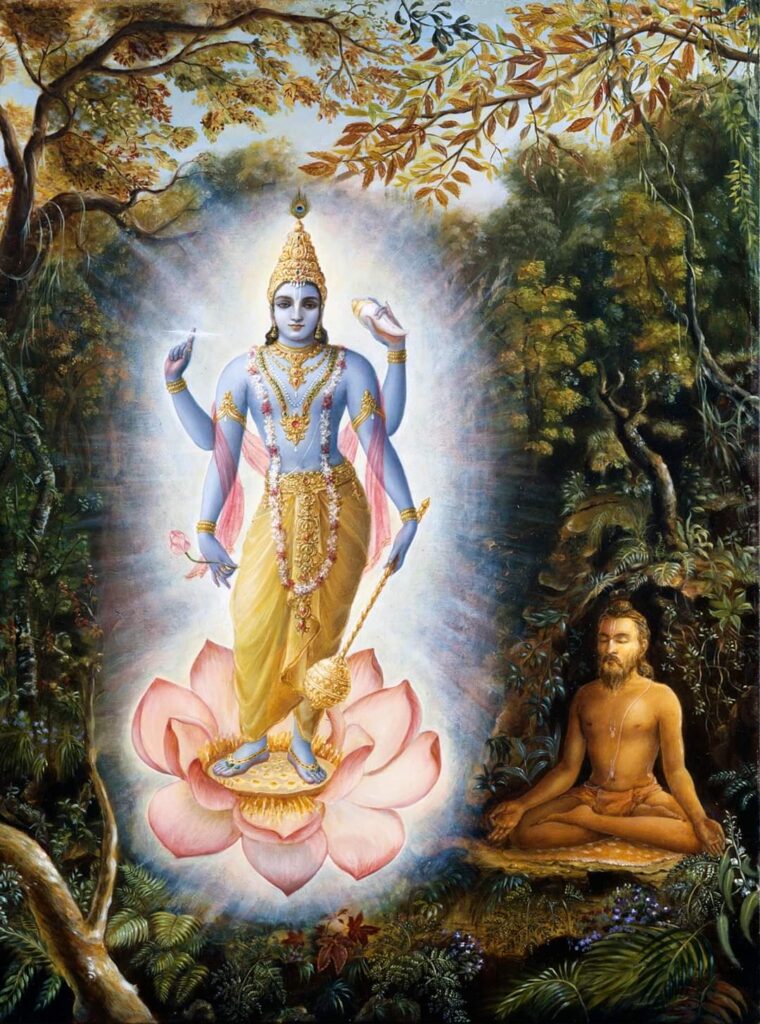In the Srimad Bhagavatam, its described how Pariksit Maharaja met the personification of Kali-yuga, who was at the time beating a cow and a bull. We tend to think of Kali as an age, or perhaps as an energy that causes the degradation of the people, and thus it may sound strange the idea that Pariksit Maharaja could physically meet him, but the fact is that all the different energies that compose the universe have their respective personifications. Just like the power of the sun is personified in the form of the demigod Surya, and the wind is personified as Vayu, all the different energies that compose the universe have their respective personifications, including things like envy, lust, death, and so on. Even our planet is personified in the form of Bhumi.
Just like in the case of the demigods, souls who have the right set of qualifications become the enjoyers and controllers of these energies, and this of course includes Kali. Thus, there is Kali-yuga, the age, and also Kali the personification of it, an embodied being who controls its influence.
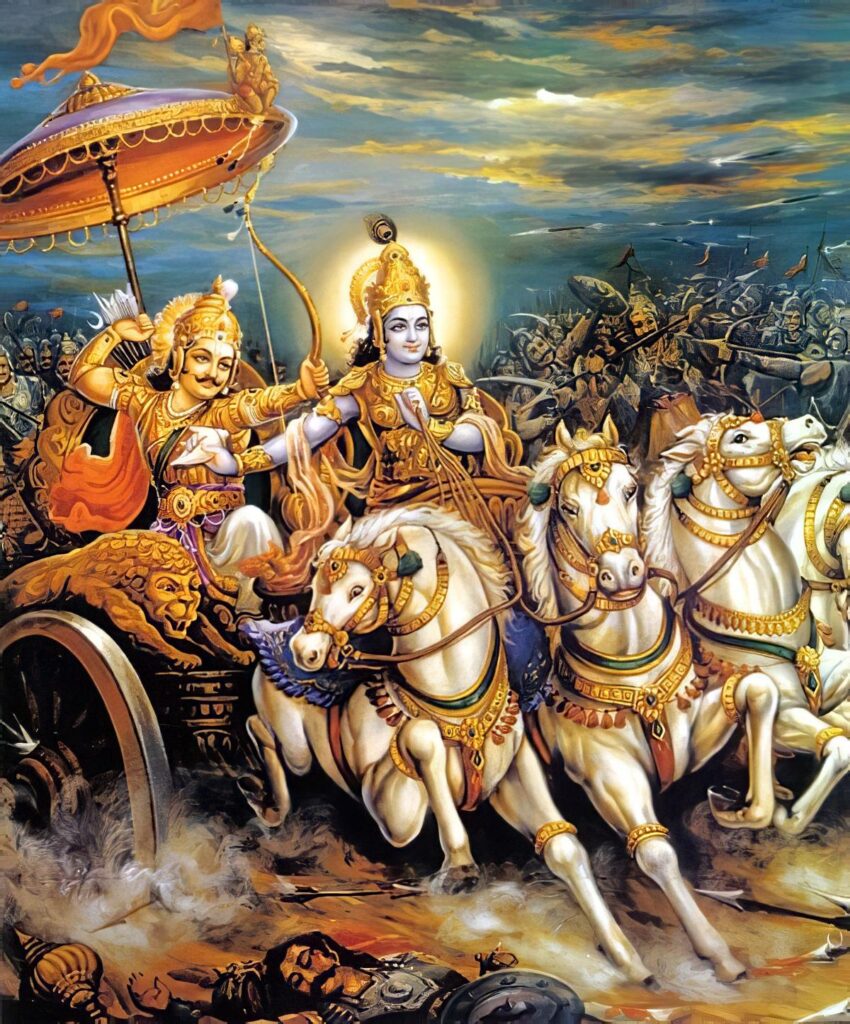
The idea that someone could attack a cow and a bull sounded inconceivable to the sages, and they were further puzzled by the fact that Maharaja Pariksit just punished the culprit, instead of immediately putting him to death, as would be expected in such a serious crime. This is yet another example of the difference in values. Nowadays the situation is so hellish that most people see cow killing as normal, while just a few thousand years ago this sounded absolutely inconceivable.
Continue reading
